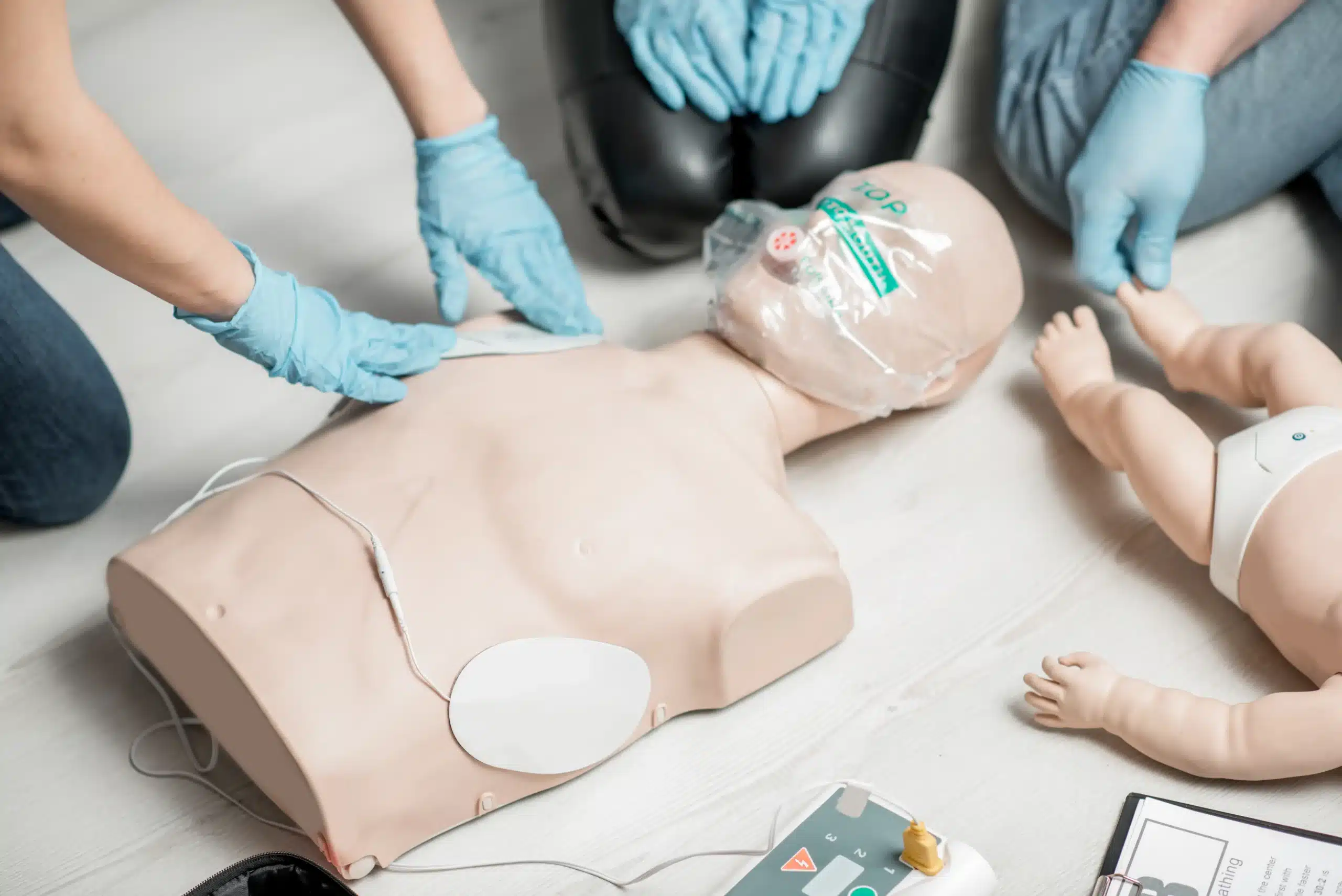Imagine someone in your office suddenly collapses. Would you know what to do? Workplace CPR and first-aid training could make a crucial difference. This blog explores why such training is essential for every workplace, offering insights into its significant benefits and practical implementation.
Saving Lives in Seconds
Accidents happen. When they do, every second counts. Prompt response can save lives during emergencies. CPR (cardiopulmonary resuscitation) restores blood circulation to vital organs, buying time until professional help arrives. First-aid training equips employees with skills to treat minor injuries on-site. Together, these skills create a safer workplace.
The Occupational Safety and Health Administration (OSHA) mandates first-aid resources in easily accessible locations, especially in high-risk industries like construction and manufacturing. A trained workforce responds faster, reducing the severity of incidents.
Boosting Employee Confidence
Workplace CPR and first-aid training boost employee confidence. Knowing how to act during an emergency empowers staff. They feel ready to handle crises, reducing panic and confusion. Confidence in their abilities fosters a safer work environment.
Training also enhances teamwork. Employees collaborate better in emergencies, improving the overall response. A coordinated effort can minimize risks and ensure the quickest possible aid.
Reducing Workplace Accidents
Prevention is key. Training helps reduce workplace accidents. Employees learn to recognize hazards, enabling them to take proactive steps in preventing injuries. Awareness minimizes risks and creates a culture of safety.
A study by the American Heart Association found that trained workplaces report fewer accidents. Regular training sessions reinforce safe practices and keep safety top-of-mind, fostering a vigilant work environment.
Understanding Legal Requirements
Understanding legal regulations is crucial. Many regions mandate workplace CPR and first-aid training. Compliance with these laws avoids penalties and demonstrates a commitment to employee welfare.
Employers should familiarize themselves with local laws and guidelines. Collaborating with certified training providers ensures adherence to standards and regulations, while also providing high-quality training.
Cost-Effective Investment
Training is a cost-effective investment. The upfront cost of training is minimal compared to potential savings from avoided incidents. Fewer accidents mean reduced medical expenses and less downtime, benefiting the company financially.
Insurance premiums may decrease as a result of a safer workplace. Insurers often recognize efforts to enhance safety and reward companies with lower rates. The savings outweigh the initial training costs.
Tailoring Training to Your Workplace
Not all workplaces are the same. Tailored training is essential. Consider specific hazards present in your industry. Customize training programs to address these challenges, ensuring maximum relevance and effectiveness.
Collaborate with training providers to design a program that meets your needs. Regularly update training materials and practices to reflect any changes in your work environment.
Encouraging Continuous Learning
Learning shouldn’t stop after initial training. Encourage continuous learning. Provide regular refresher courses to keep skills sharp. This approach ensures that employees remain prepared for any situation.
Online courses and workshops offer flexible learning options. Employees can update their knowledge at their convenience, enhancing accessibility and engagement.
Building a Culture of Preparedness
Preparedness is contagious. Promote a workplace culture focused on readiness. Recognize employees who complete training and encourage others to participate. Share success stories to illustrate the impact of preparedness.
Regular drills and practice sessions reinforce skills and keep everyone alert. A well-prepared workforce is a safer workforce.
Enhancing Employee Morale
Workplace safety contributes to morale. Employees feel valued when their safety is prioritized. A secure environment fosters loyalty and satisfaction, leading to higher retention rates.
Happy employees are productive employees. Reduced stress from safety concerns allows staff to focus on their work, boosting overall productivity.
Impacting the Community
Training goes beyond the workplace. Employees carry these skills into their communities. They become valuable assets in public emergencies, potentially saving lives outside of work.
Community engagement enhances the company’s reputation. A socially responsible image attracts clients and top talent, contributing to business growth.
Choosing the Right Training Provider
Selecting the right provider is crucial. Look for certified organizations with a track record of success. Evaluate their curriculum, teaching methods, and trainer qualifications.
Seek feedback from other companies that have used their services. Positive testimonials are an indicator of quality training.
Conclusion
Workplace CPR and first-aid training are invaluable. They save lives, boost confidence, and foster a culture of safety. Investing in training offers long-term benefits, both financially and culturally. Encourage ongoing learning and create a safer workplace for everyone.
Suggested SEO Title and Meta Description
SEO Title
Essential Workplace CPR and First-Aid Training Benefits
Meta Description
Explore why CPR and first-aid training are essential for workplace safety. Learn about benefits, legal requirements, and cost-effectiveness.






